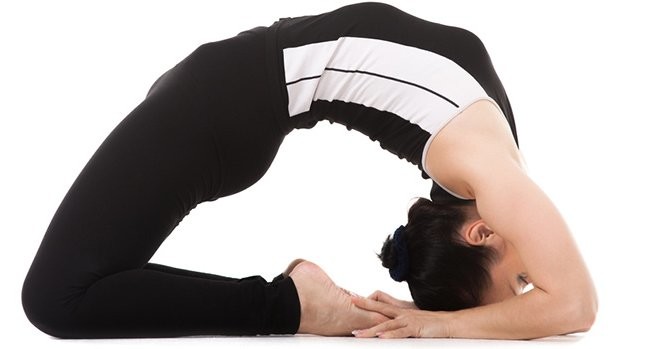
How To Do The Kapotasana (Pigeon Pose) And What Are Its Benefits
Kapotasana or Pigeon Pose is an asana. Sanskrit: कपोतासन; Kapot = Pigeon, Asana = Pose. Pronounced as KAH-put-AWS-ah-nuh.
The name comes from the Sanskrit words Kapota (कपोत) meaning “pigeon”, and asana (आसन) meaning “posture”. When one assumes the pose, it looks just as graceful as the bird is. With this asana, you will find more freedom and energy in your spine and your mind. It has a whole lot of benefits and also gives your body a good stretch. It is a must to include this asana in your yoga practice.
For this asana, it is essential that your bowels and stomach are absolutely empty, with a gap of at least four to six hours between your meal and the practice. This will also give your body enough time to digest the food and expend the energy produced.
How To Do Pigeon Pose (Kapotasana)
1. Start the practice by assuming the Ustrasana.
2. Inhale and lift the lower part of your belly up. But ensure you pull it in before you raise it. While you do this, move your tailbone downwards to stabilize the lower back. Gently exhale.
3. Inhale, and pull up both your arms, such that they are along your ears. You could bring your palms together if possible. Exhale and then move backward, making sure your lower back is long but stable. Make sure there is no pain or strain. Inhale and then go further, sternum first.
4. Gently lift your shoulders and squeeze your elbows towards each other. Move your head back, and hold the pose for at least five breaths.
5. Inhale again, and let your arms reach the floor. Press your feet into the floor, and then bend the knees only as much as it is necessary to reach the palms of the hands, reaching outside each foot. Keep moving backward as you check with your lower back from time to time.
6. Walk your hands backward towards your knees so that the fingers meet the heels. Once they do, clutch them tightly.
7. Now as you hold both your feet, squeeze the elbows towards each other, and push the hip forward while keeping the space and length of your lower back intact.
8. As you exhale, bend your elbows and fix them on the floor. Hold the position for about 30 seconds to one minute, or as long as you are comfortable.
9. Gently come out from the posture while keeping your breath normal. Roll on your spine and assume the Balasana or the child’s pose before you come back to normal.
The Benefits Of Pigeon Pose (Kapotasana)
This asana has many amazing benefits.
1. It helps increase the elasticity in your arms, spine, thighs, calf muscles, shoulders, and hands.
2. It helps to stretch and strengthen the muscles and joints in your legs.
3. This asana also tones the muscles of the throat and organs inside the ribcage, abdomen, and chest.
4. It refines the blood circulation in the body and improves and enhances the working of the digestive system.
5. It helps to reduce blood pressure and lowers the effects of chronic diseases.
6. It reduces sciatica and makes the lungs stronger.